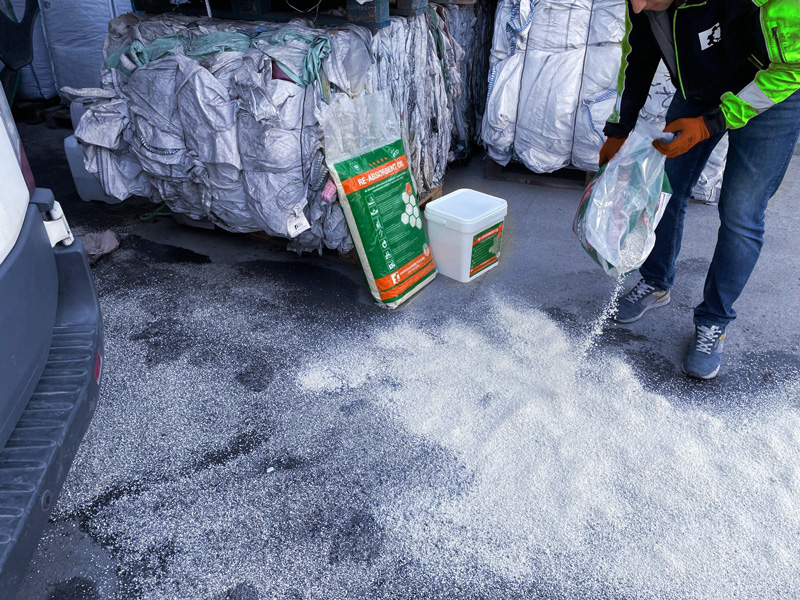
Effective Oil spill cleanup with
Re-Absorbent Oil
Polyurethane sorbents are highly effective for cleaning up oil spills due to their excellent absorption capacity and hydrophobic properties. Here are some steps for using polyurethane sorbent for oil spill cleanup:

How to apply Re-Absorbent Oil:

Identify the affected area:
The first step in oil spill cleanup is to identify the affected area and determine the extent of the spill. This will help you determine the amount of sorbent material required.

Deploy sorbent material:
Polyurethane sorbent can be deployed in a variety of ways, such as by spreading it over the surface of the water, using booms or containment barriers to concentrate the oil, or using vacuum trucks or skimmers to collect the oil and sorbent together. The sorbent material should be deployed as quickly as possible after the spill to prevent the oil from spreading.

Allow the sorbent to absorb the oil:
Polyurethane sorbent will absorb the oil and expand as it does so. Allow the sorbent material to remain in place until it has absorbed as much oil as possible.

Collect the used sorbent material:
Once the sorbent material has absorbed the oil, it can be collected and disposed of properly. Depending on the amount of oil absorbed, the used sorbent material may be classified as hazardous waste and require special disposal procedures.
Sorbent becomes a hazardous material after absorbing the contamination according to the danger class of the absorbed liquid.

Repeat as necessary:
Depending on the size and severity of the spill, multiple rounds of sorbent deployment may be necessary to fully clean up the affected area.
Overall, polyurethane sorbent is a highly effective and efficient material for cleaning up oil spills. Its ability to absorb large quantities of oil quickly and effectively makes it an essential tool for protecting the environment and mitigating the impact of oil spills.
